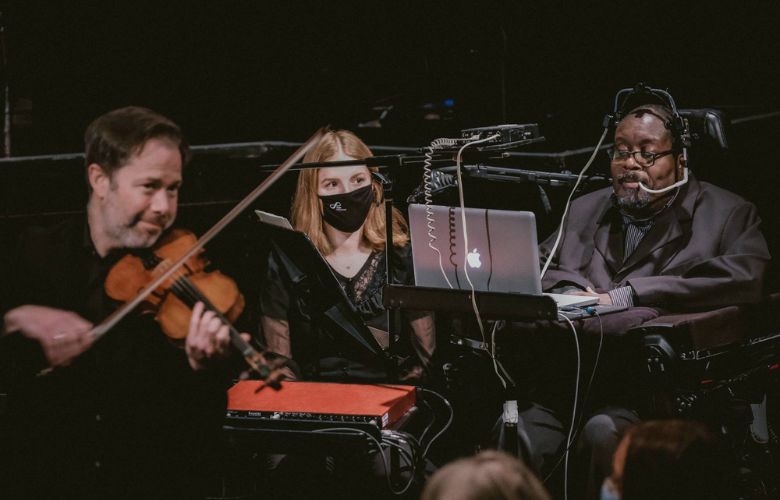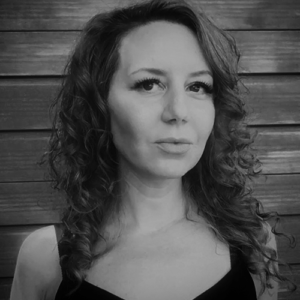
UK orchestras are uniting to perform new works that champion disabled performers. A new composition will be debuted by the BSO Resound and RNS Moves ensembles, which are inclusive arms of the Bournemouth Symphony Orchestra and the Royal Northern Sinfonia respectively. Utilising incredibly pioneering electronic instruments that respond to movements from the fingers, head, and breath, these adaptations are deeply impressive as they are highly accessible and infinitely more playable than acoustic instruments.
Audiences in Dorset and Gateshead will experience a ground-breaking collaboration this spring, as professional disabled and non-disabled musicians unite in the world premiere of a brand-new piece of music titled Falling, written especially by composer Kate Whitley. Inclusive ensembles BSO Resound and RNS Moves unite to perform Falling alongside their colleagues from Bournemouth Symphony Orchestra in Poole on 22nd February, and Royal Northern Sinfonia in Gateshead on 3rd March.
The new piece has been co-commissioned by Bournemouth Symphony Orchestra (BSO) and Sage Gateshead and offers a new world of musical colours.
The members of BSO Resound and RNS Moves have helped ignite conversations about the representation of disabled musicians in classical music. They feature as soloists in Falling alongside their colleagues from Bournemouth Symphony Orchestra and Royal Northern Sinfonia (RNS).
Both BSO Resound and RNS Moves have made headlines for championing the inclusion of disabled musicians since their formation, both in 2018. BSO Resound features a LinnStrument and RNS Moves features Headspace; the former using touch and the latter using head movements and breath to create sound. Both are MIDI-based instruments.
Composer Kate Whitley, said:
“It’s been a total pleasure working on this project — it’s an incredible group of musicians and we’ve worked to create the piece together, which has been a really inspiring process. I’m lucky to be a part of it.”
Musician Clarence Adoo plays the Headspace instrument, and has been paralysed from the neck down since a 1995 car accident. Prior to this he was a trumpet player, and utilises the breath controls of the electronic instrument. Speaking to the BBC, Mr Adoo expressed his excitement and disbelief at where he is now, saying:
“I don’t think anybody would have written a fiction book about me coming from intensive care at that level to be good enough to be playing on stage again with the Bournemouth Symphony Orchestra.”
The LinnStrument is an expressive MIDI controller for musical performance, made by Roger Linn, who first released this innovative creation in 2014.
Unlike a standard piano MIDI keyboard’s on/off switches, LinnStrument senses your fingers’ subtle movements in five ways, enabling musical performance expression rivalling that of fine acoustic instruments. The controller is available in two sizes: as a 200 pads or a 128 pads model.
Unlike the simple on/off switches of a MIDI piano keyboard, LinnStrument’s patented touch-sensing technology permits you to slide in pitch directly from one note to another, tilt your finger forward/backward for subtle timbral variation, and vary note loudness with pressure or velocity, all sensitive to very light touches.
The piano’s note arrangement works well for piano music, but its uneven pitch intervals and rear-positioned black keys make it ill-suited for performing natural pitch bends, slides and other pitch gestures, important elements of expressive performance. Stringed instruments don’t have this problem because the semitones are uniformly spaced.
So LinnStrument’s notes are arranged as on any stringed instrument. Each row is a series of consecutive semitones, so bends and pitch slides are simple and intuitive: play a note, slide left or right to the destination note, then wiggle it for vibrato.
You can tune the rows like a guitar, violin or however you wish. By default they are tuned in musical fourths (five semitones), like a bass guitar with 8 strings. This note arrangement is called the 4ths String Layout and is fast becoming a new standard for expressive musical control, used in Ableton Push, Roli’s LightPad Block, a variety of iPad apps and now over 4100 LinnStruments sold.
To make it easy to find the right notes, the scale notes are lit, with all the C note pads lit in a different colour and having a Braille-size bump for tactile feedback. Alternatively, you can light any scale and in any of 10 colours. Or if you’re a piano keyboard player, do what many LinnStrument players do: place LinnStrument behind your keyboard for expressive solo performance with your right hand.
The Fourths String Layout has other advantages over the piano keyboard:
1) It’s isomorphic, meaning that the same chord or scale fingering works in all musical keys.
2) There are multiple instances of each pitch, permitting solo and accompaniment play in the same pitch range, and a variety of fingerings for each chord or scale.
3) 5 octaves (on the large model) fit in a playing surface that’s only 18.7 inches (475 mm) wide.
Headspace can be described as a virtual instrument as the sounds are created through a computer using synthesised sounds. If anyone says it can’t be a real instrument, then you must have to look at the similarity between this and a synthesiser. They are very similar in the way they produce sound, the key difference is how the instrument is controlled.
As an accomplished pianist, Clarence will have played a synthesiser many times. Since the accident, he had electronic controls installed in his house that he operates with a blow tube, so an instrument that is like a synthesiser, but controlled by head movements and breath is ideal for him.
The instrument’s inventor Rolf Gehlhaar, who described himself as a ‘German-born English-resident American’ warned against complacency:
“It is a real musical instrument and like any instrument you need to put effort into practising it.”
Gehlhaar was asked to devise an instrument that Clarence could play. The result was the Headspace Instrument, a computer-based “virtual” instrument, but a real instrument nonetheless. It could be classed as a wind instrument as it is controlled by Clarence’s breath, but is assisted by head movements.
Clarence explains:
“The headset I am wearing has sensors either side and when I move my head it moves a mouse on the screen- the blow tube down the side works as the left click of the mouse and the blowing activates different notes and keys. The sensors on top of this headset – they allow me to move the mouse left and right. The mouthpiece is like the left click of the mouse and that enables me to get it started. From starting to learn to play the equipment it took ten minutes to be able to play Auld Lang Syne with only two mistakes.”
The next performance takes place at 7:30pm on Friday 3rd March at Sage Gateshead, with the programme for the show including:
Gyorgy Ligeti Concert Românesc
Kate Whitley New commission
Jean Sibelius The Tempest, Suite No. 2
Zoltán Kodály Dances of Galanta
Tickets are available now from the official website, and alternatively viewers can livestream the concert globally or watch on demand after the concert finishes. A captioned livestream option is also available.
Adrian Angelico: A Virtuoso Trans Male Opera Singer
James “Fitz” FitzSimmons Interview: The Boys In The Band On Netflix


Michelle is a musician and composer from the UK. She has performed across the UK and Europe and is passionate about arts education and opportunities for women and girls.
Read Full Profile© 2021 TheatreArtLife. All rights reserved.

Thank you so much for reading, but you have now reached your free article limit for this month.
Our contributors are currently writing more articles for you to enjoy.
To keep reading, all you have to do is become a subscriber and then you can read unlimited articles anytime.
Your investment will help us continue to ignite connections across the globe in live entertainment and build this community for industry professionals.